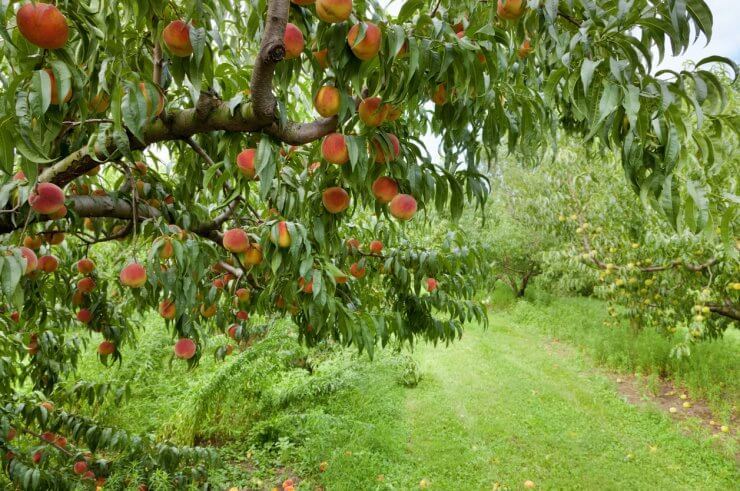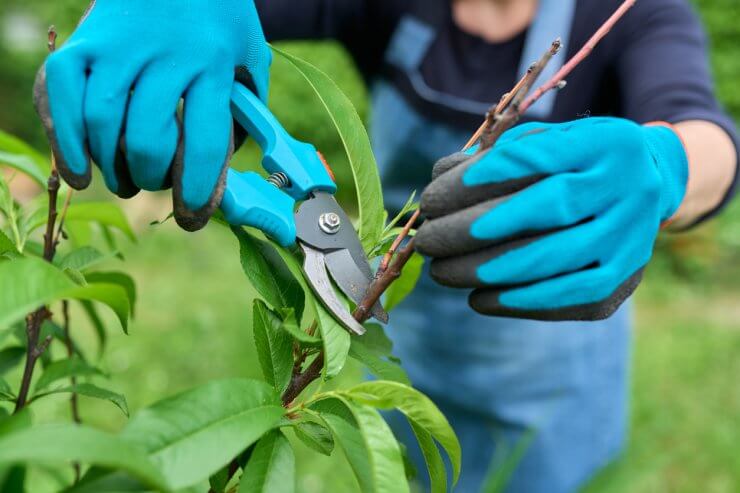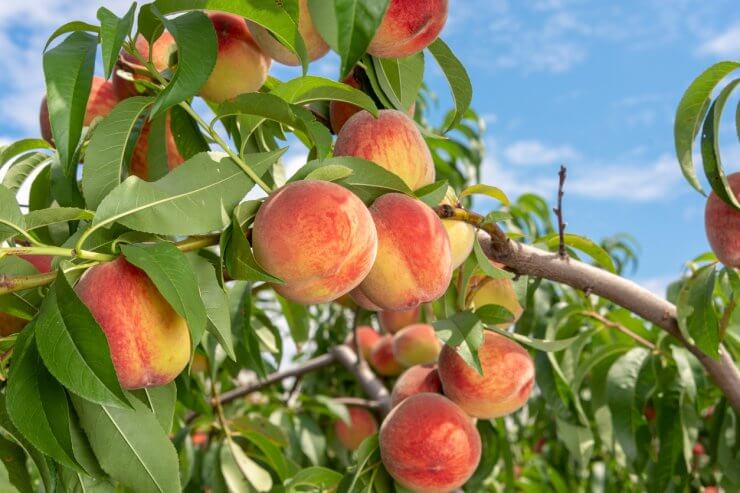
You’re standing under your peach tree in July, reaching for what looks like a promising fruit, only to find a sad, golf ball-sized disappointment that tastes more like the white rind of a watermelon than than summer sunshine. Sound familiar? The culprit isn’t bad luck or poor soil–it’s probably a lack of proper pruning.
Here’s something most folks don’t realize: peach trees are basically fruit-making machines that need regular tune-ups. Without pruning, they’ll exhaust themselves trying to ripen hundreds of tiny, mediocre peaches instead of focusing their energy on fewer, spectacular ones.
Why Peach Trees Are Drama Queens
Unlike apples or pears, peach trees fruit exclusively on one-year-old wood. This means the branch that produces your peaches this summer will never fruit again. Ever. It’s a fascinating evolutionary quirk that makes peaches more like flowering annuals than traditional fruit trees. This is why unpruned peach trees quickly become a tangle of dead, unproductive branches with all the good fruit growing impossibly high.
Peach trees also have what I call “fruit amnesia”–they’ll set way more peaches than they can actually ripen well. A single branch might try to support thirty small peaches when it can only properly nourish eight to ten good-sized ones. Nature’s optimistic, but not always practical.
The Magic Window for Pruning

The absolute best time to prune peach trees is late winter, right before the buds start swelling but after the worst cold has passed. In most areas, this means February to early March. You want the tree dormant but not frozen solid. Here’s a cool fact: pruning during dormancy actually energizes the tree. Those cuts trigger hormonal responses that redirect growth exactly where you want it.
Avoid fall pruning like the plague, it can stimulate new growth that won’t have time to harden off before winter, leaving your tree vulnerable to cold damage. Summer pruning is possible for minor touch-ups, but save the heavy lifting for late winter.
The Three-Cut Method
Every major pruning cut should use the three-cut technique to prevent bark tearing. First, make a small undercut about six inches from where you want the final cut. Second, cut from the top, a few inches further out, the branch will break cleanly at your undercut. Finally, make your clean final cut just outside the branch collar (that slightly swollen area where the branch meets the trunk). This prevents damage to the trunk and helps the wound heal faster.
The Open Vase Approach
Peach trees thrive with an “open center” or “vase” shape. Instead of having one central leader like a Christmas tree, you want three to four main scaffold branches spreading outward from a relatively low trunk, think of a wine glass or tulip shape.
Start by removing any branches growing straight up through the center of the tree. These “water sprouts” will never fruit well and block light from reaching the productive branches. Next, eliminate any branches growing straight down or rubbing against other branches. You’re creating a tree that looks like it’s welcoming sunlight with open arms.

Here’s where it gets interesting: each year, you’ll remove about 30–40% of the previous year’s growth. This sounds brutal, but it’s actually the secret to consistent, large peaches. Look for pencil-thick shoots from last year–these are your future fruit producers. Keep the best-positioned ones and remove the rest.
Remove any branch that’s more than four years old. These older branches become less productive and take energy away from the vigorous young wood. It’s like decluttering your house–removing the old makes room for the better.
Thinning Your Peaches
Most people skip this, but thinning young fruit in late spring is crucial. When peaches are about marble-sized, remove enough so the remaining fruits are spaced 6–8 inches apart. Yes, it feels wasteful, but you’re trading quantity for quality. The remaining peaches will be larger, sweeter, and less likely to break branches under their weight.
Reading Your Tree’s Signals
A well-pruned peach tree should have about 18 inches of new growth each year on its main branches. Less than that means you’re probably under-pruning or the tree needs fertilizer. More than three feet of growth suggests over-fertilization or excessive pruning.
Watch for the telltale signs of success: fruit developing on branches you can actually reach, good air circulation that keeps leaves dry and disease-free, and peaches that actually taste like peaches should–sweet, juicy, and worth the wait.
The transformation won’t happen overnight, but with consistent annual pruning, you’ll be amazed how quickly your tree goes from producing disappointing ping-pong balls to prize-worthy peaches that make your neighbors suddenly very friendly come harvest time.
Peaches are so sweet, they’re used as a synonym for a person who is delightful! With our Peaches Gardening Guide, you’ll have everything you need to know about growing and enjoying this delicious fruit.
Have you ever taken a deep breath and drastically pruned your peach tree? What happened next? Did your harvest improve, or did you regret it? Let us know in the comments.


 Previous
Previous

